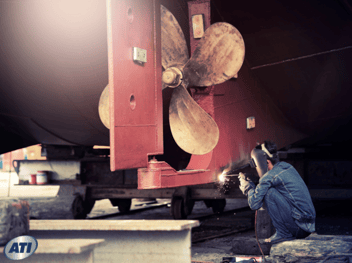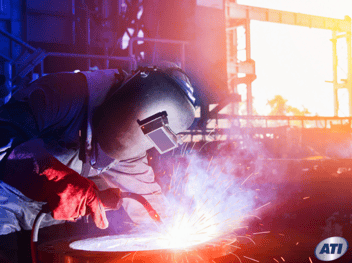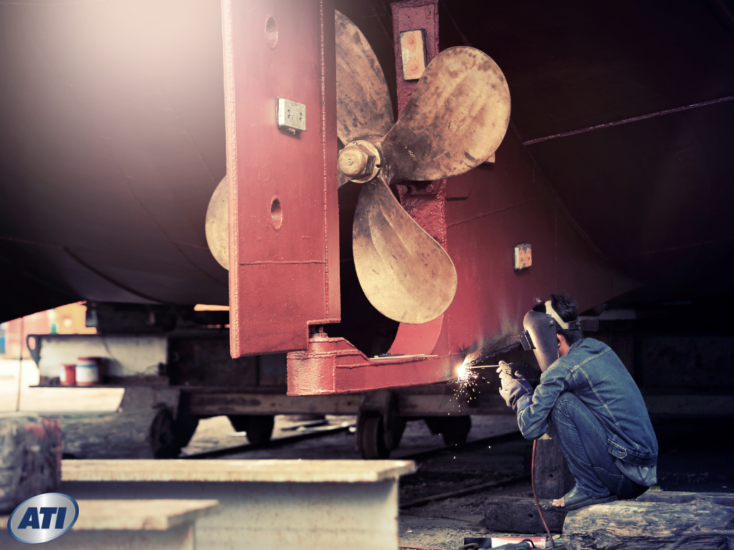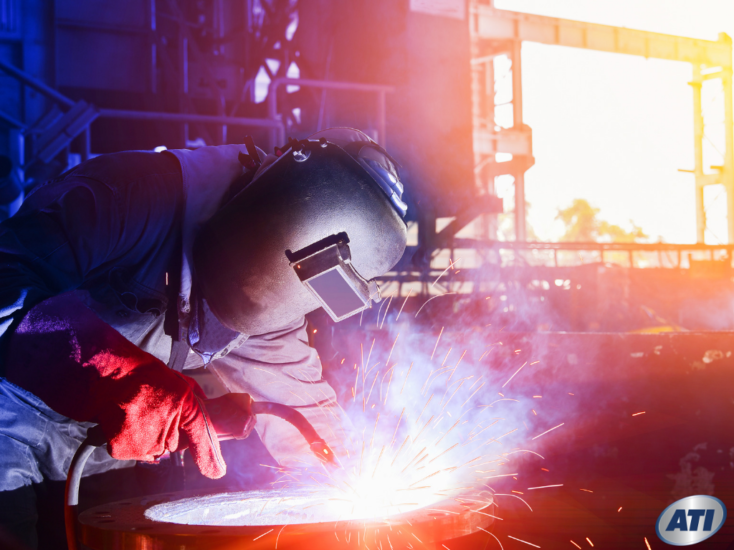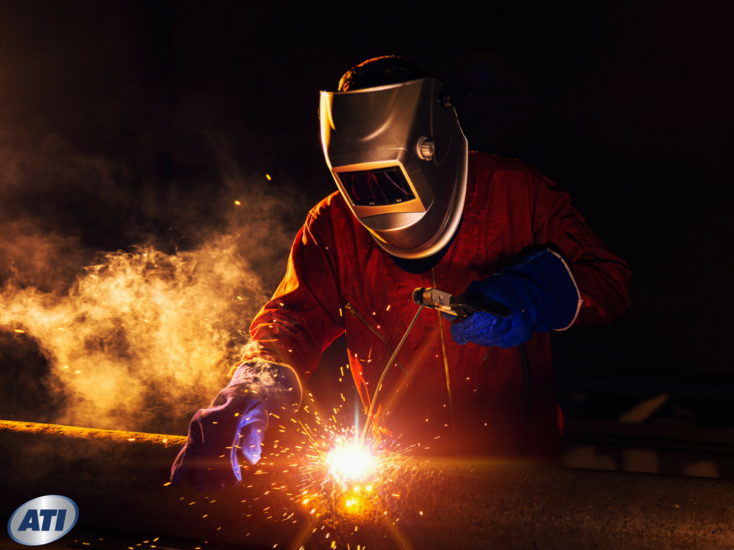How Many Types of Welding Are There: Will I Need to Learn All of Them?
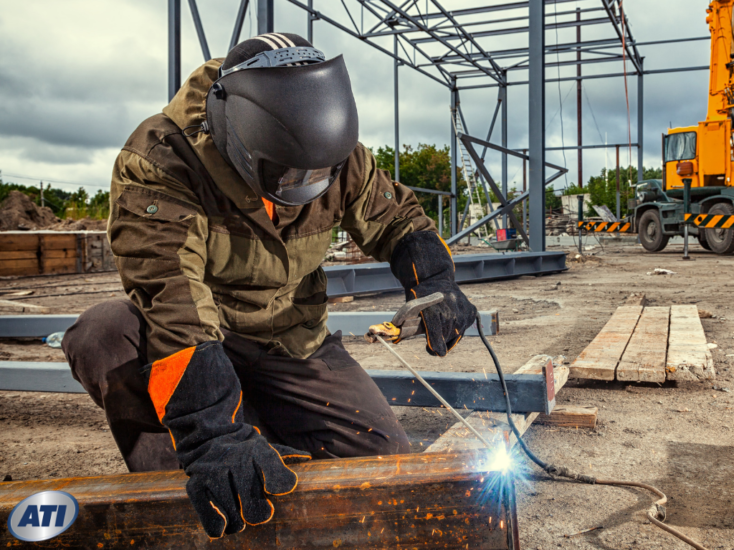
Have you ever watched a maritime welder in action — sparks flying, visor down on what looks like an astronaut’s helmet and heavy-duty gloves in place — and thought to yourself, “That could be me”? With the right training, it can be. Here’s how.
What is maritime welding?
There are three types of maritime welding. Most commonly, the term refers to the process of joining metal parts to build ships and boats and to conduct repairs on seagoing vessels. The third type is carried out under water on offshore oil rigs by scuba divers.
In the shipbuilding industry, welded joints are better than rivets because they are faster to complete and use less steel. Less steel translates to lower costs, both in terms of materials and lighter ship weight resulting in lower fuel costs. Welded joints also allow for smoother hull surfaces and less drag; ships glide through water faster per unit of fuel consumption.
What types of welds do shipbuilders use?
Maritime welders use three main techniques:
- Arc welding — Using a metal electrode connected to an electrical power supply, the operator creates an electric arc that is hot enough to melt the electrode onto a metal plate. A second metal plate is pushed into the molten metal, which cools to form a permanent joint. It’s like joining two slabs of chocolate together by melting a strip of chocolate onto one of them, and then pushing the other piece into the melted strip and holding the two slabs together until the joint solidifies.
- Gas welding — Here, the reaction between oxygen and a fuel gas, often acetylene, is hot enough to melt two pieces of metal. This technique has several advantages over arc welding; namely, speed, good control over the rate of melting, and portability of the apparatus. Because the equipment is less bulky than that used in arc welding, it is suitable for the confined work spaces often found in the maritime environment. Note, however, there is an increased risk of fire.
- Resistance welding — This is a thermo-electric process that generates heat at the interface of two pieces of metal that are being joined together. It is accomplished by passing an electric current through them using precisely controlled time and pressure.
Other practices that tend to be specific to maritime welding include multiple passes, tack welding, and welding sequences.
The importance of formal education in welding
While, according to the Bureau of Labor Statistics, it is possible to get a welding job with little more than a high school diploma and some on-the-job training, you’d be doing yourself a huge favor to invest yourself in some formal instruction, such as an associate degree in maritime welding.
There are several reasons why this is so. First, the techniques and practices of whoever teaches you on the job are likely to be limited to their own personal experiences. If all they’ve ever used are tack welds, that is likely to be all that they’ll teach you.
Second, unless they keep up with new developments and technology, the information they pass on offer may become rapidly out of date. Finally, along with their skills and proficiencies, they’ll also pass on to you their bad habits.
Associate Degree in Occupational Training in Maritime Welding
By pursuing an associate degree with a recognized technology training institute, you could be availing yourself of the latest in techniques and equipment. A typical curriculum might include courses in a broad range of maritime welding techniques including:
- Shielded metal arc welding
- Gas metal arc welding
- Tungsten metal arc welding
- Gas Tungsten Arc/Shielded Metal Arc Welding, 2G & 5G Pipe
- Gas Metal Arc/Gas Tungsten Arc Welding, Aluminum
How to ignite your welding career
The BLS suggests some important personal qualities necessary to make a success in maritime welding. The job requires manual dexterity as well as physical strength and stamina. You need a steady hand and good hand-eye coordination to hold a torch in place. You will also need good eyesight and attention to detail. So, you can perform precision work and monitor changes in the flow of molten metal.
You’ll also be at an advantage if you have some background in math, mechanical drawing, physics, chemistry and metallurgy. An understanding of electricity is useful, as well as knowledge of computers, and the ability to read blueprints.
Additional training to advance your career
If you choose an institution that offers courses in Service Management in addition to Welding Technology training, you could be in a position to compete for higher-paying jobs with more responsibility. This additional training could help you learn everything you need to know for supervisory or specialty jobs.
ATI offers degree programs in welding
ATI offers courses in service management, customer service, psychology, ethics in accounting and a whole suite of opportunities to learn how to manage the business aspects of a welding operation in addition to the technical side.
Earning an Associate of Occupational Science Degree in Welding Technology with Service Management could help you achieve your welding goals! If this sounds like something you’d be interested in, contact Advanced Technology Institute today.

Industry Knowledge
Welcome to the Advanced Technology Institute's Blog, your resource for industry insights and discussions on technologies shaping the future of automotive, heavy vehicle, hvac, welding, and other related career paths.
Explore how ATI's curriculum and hands-on learning opportunities can propel your career in the tech-driven world.
